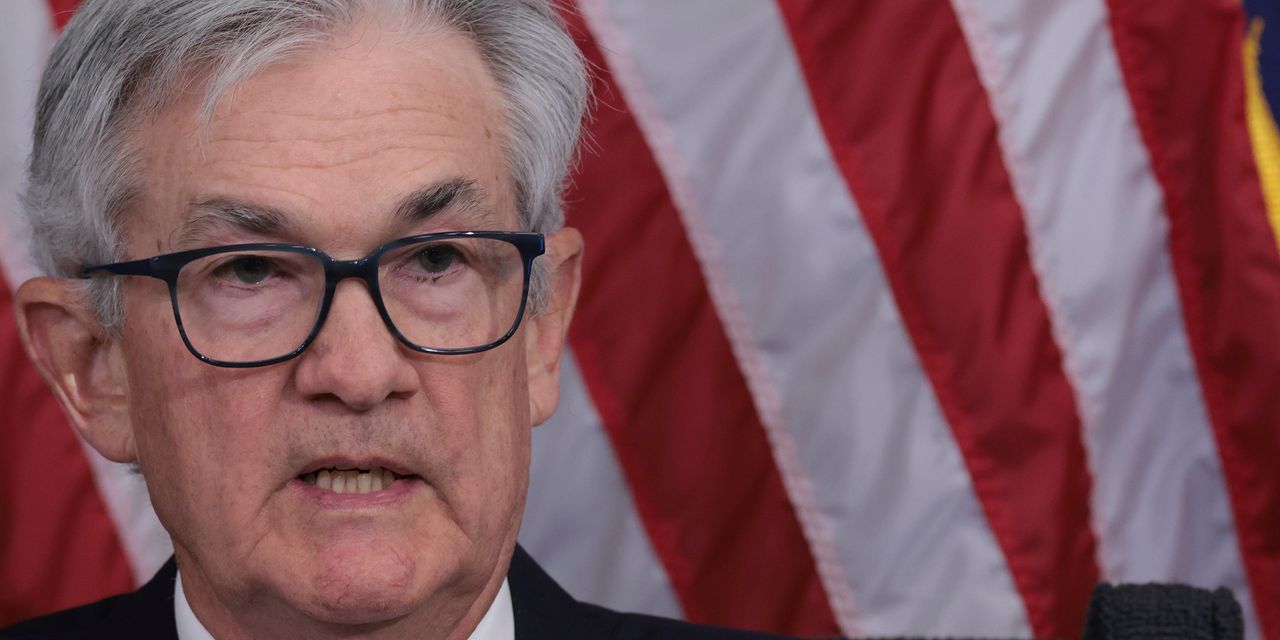Exchange-traded funds that invest in Treasury bonds fell Tuesday after the May inflation report, as the market anticipated the Federal Reserve may continue hiking interest rates after a June pause.
Shares of both the iShares 20+ Year Treasury Bond ETF
TLT,
and iShares 10-20 Year Treasury Bond ETF
TLH,
closed 1% lower, while the iShares 7-10 Year Treasury Bond ETF
IEF,
declined 0.7%, according to FactSet data. Funds focused on the shorter end of the Treasury bond yield curve also declined, although more modestly, with the iShares 1-3 Year Treasury Bond ETF
SHY,
ending Tuesday down 0.2%.
A report from the Bureau of Labor Statistics on Tuesday showed that inflation eased in May, softening in line with expectations from economists polled by the Wall Street Journal. Traders in the federal-funds futures market see a 93% chance the Fed will on Wednesday announce a pause in its rate increases, which have been aimed at battling high inflation, according to data from the CME FedWatch Tool on Tuesday afternoon.
But fed-funds futures also pointed to traders largely expecting that the central bank may resume hiking in July, with a 62.5% chance of a rate increase of a quarter-percentage point. The Fed’s benchmark rate is currently in a target range of 5% to 5.25%, after an aggressive series of increases that began in March 2022.
Treasury bonds ETFs fell Tuesday as the market assessed the Fed may pause rate hikes at the conclusion of its policy meeting on Wednesday without that necessarily meaning it’s “changing course,” said Komson Silapachai, partner of research and portfolio strategy at Sage Advisory Services, in a phone interview Tuesday.
The Fed’s messaging risks remaining “hawkish,” with investors concerned that a pause may be “a skip” in rate hikes, Silapachai said. That would mean another rate increase may be on the horizon as the central bank continues its effort to bring down inflation in a “pretty resilient” economy, he said.
Read: U.S. inflation slows again, CPI shows, and might keep Fed on sidelines
Bonds were largely hammered with losses last year as the Fed fought high inflation with rapid rate increases aimed at cooling demand in the U.S. economy. Bond yields and prices move in opposite directions.
The yield on the two-year Treasury note
TMUBMUSD02Y,
climbed 10.4 basis points to 4.694% on Tuesday, while 10-year Treasury rates
TMUBMUSD10Y,
rose 7.4 basis points to 3.838%, according to Dow Jones Market Data.
Meanwhile, shares of the Vanguard Total Bond Market ETF
BND,
which provides broad exposure to U.S. dollar-denominated, investment-grade debt, fell 0.4% Tuesday for a year-to-date total return of 2%, according to FactSet data.
So far in 2023, bond ETFs with longer-dated Treasury bonds have larger returns than funds buying shorter-duration Treasury notes.
For example, the iShares 20+ Year Treasury Bond ETF has posted a total return this year of 3% through Tuesday, beating the 1.1% total return of the iShares 1-3 Year Treasury Bond ETF over the same period, according to FactSet data.
Corporate bond ETFs
Shares of ETFs that buy investment-grade corporate bonds also fell Tuesday, with the iShares iBoxx $ Investment Grade Corporate Bond ETF
LQD,
ending 0.5% lower for a year-to-date total return of 2.8%, according to FactSet data.
But junk-bond ETFs finished the trading session with slight gains.
Shares of both the SPDR Bloomberg High Yield Bond ETF
JNK,
and iShares iBoxx $ High Yield Corporate Bond ETF
HYG,
rose 0.1% on Tuesday. As for total returns so far this year, the SPDR Bloomberg High Yield Bond ETF is up 4.6% through Tuesday, compared with a 4% gain for the iShares iBoxx $ High Yield Corporate Bond ETF, according to FactSet data.
Within corporate debt with below-investment-grade ratings, Silapachai said that he preferred high-yield bonds over leveraged loans partly due to concerns over credit quality. But he also said that “credit risk” largely looks like “rich” in high-yield bonds given the economic slowdown.
Read the full article here



